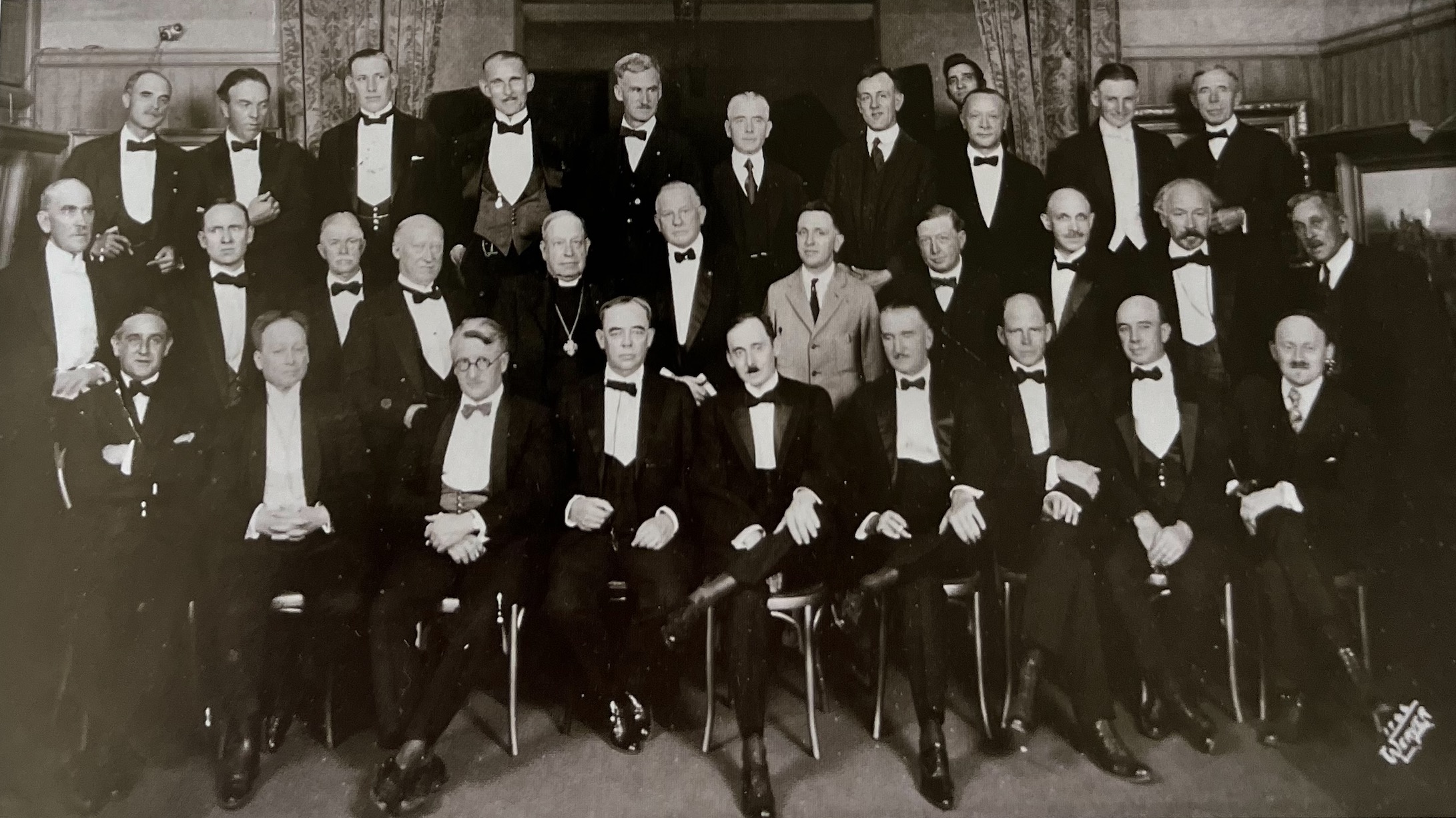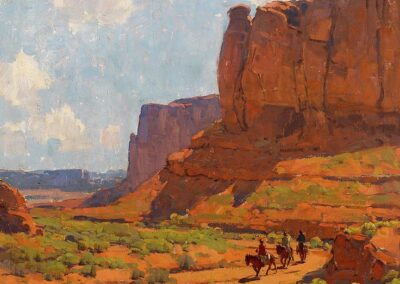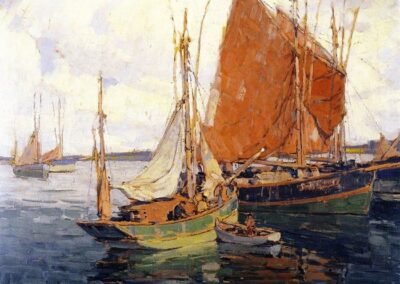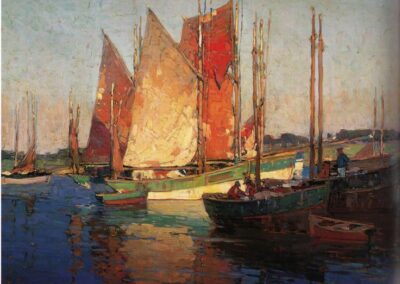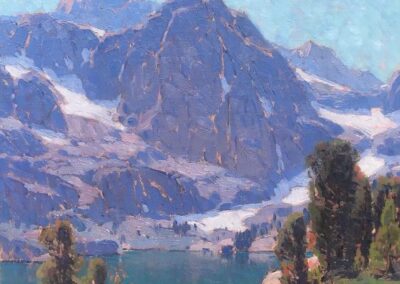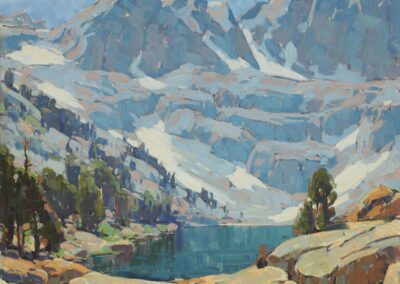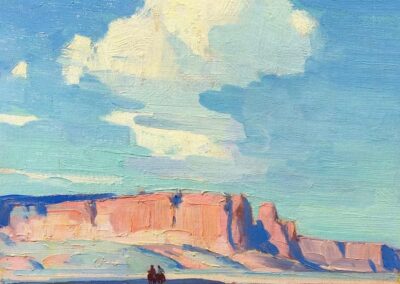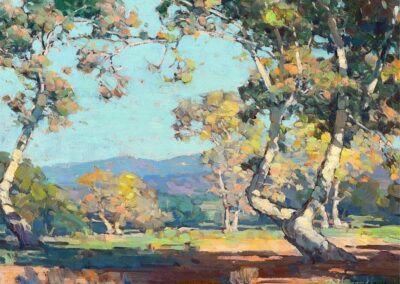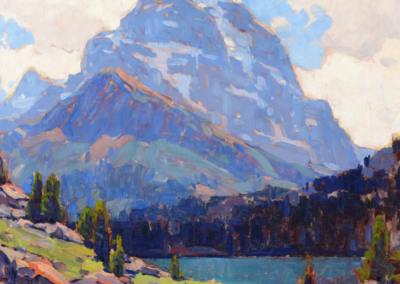Western Landscape Painter & Muralist
Edgar Alwin Payne was a renowned artist who dedicated his life to painting the outdoors. His iconic works have been described as “atmospheric, sun-filled, and composed with a sophisticated elegance.” Payne’s impressive body of work is composed of pieces that capture the beauty of Western landscapes in an array of vibrant colors and textures.
In 1941, he published Composition of Outdoor Painting, a book that provided insight into his techniques and theories. This book has since been revised multiple times, making it an essential resource for art collectors, artists, teachers, and art dealers alike.
Payne’s works are still highly sought after today thanks to their timeless beauty and vivid depictions of outdoor life. His talent has made him an enduring example of American art and a source of inspiration for many aspiring artists worldwide.
Payne’s legacy is one that continues to live on in his paintings, which can be found in various museums, galleries, and private collections throughout the U.S. and abroad. His works prove he was indeed a master of his craft, one whose dedication to portraying outdoor life and landscapes will remain an inspiration for generations to come.
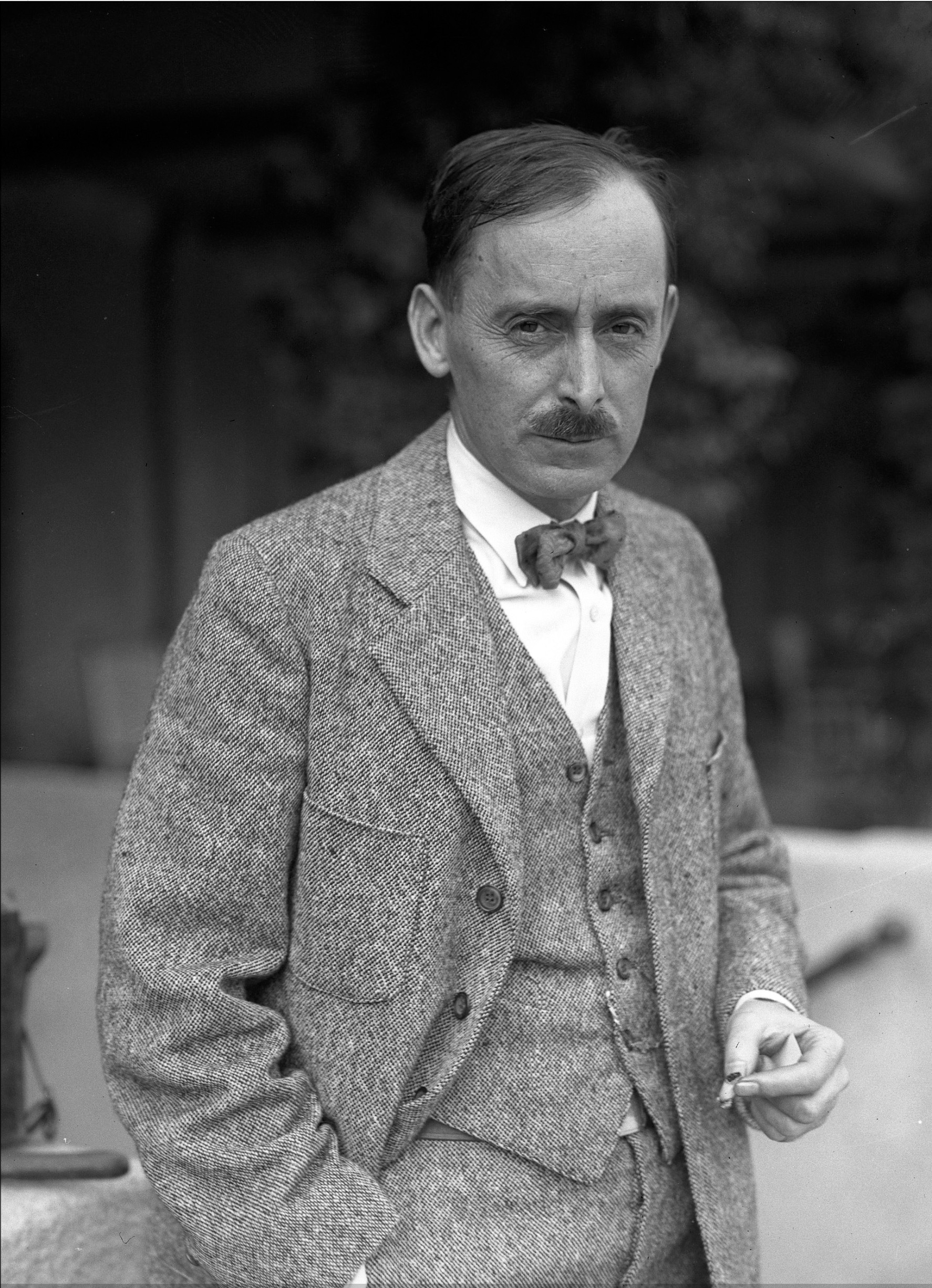
Edgar Alwin Payne
1883 – 1947
Payne’s creations are a true testament to the power of art and its ability to capture the beauty of nature in all its glory. By studying his works, one can gain an appreciation for the complexity and depth that goes into outdoor painting. His passion for creating beautiful landscapes will continue to delight viewers for years to come. Edgar Alwin Payne is truly an artist that deserves recognition and admiration.
In 1957, Edgar Payne’s wife, Elsie Palmer Payne, penned a biography about her husband. It’s a fascinating read that offers another glimpse into the life of a renowned artist.
Edgar Alwin Payne was born in Washburn, Missouri, on March 1, 1883. He grew up in the Ozarks, where his love of mountains and deep feelings for Nature were engendered. He left home at an early age because his father objected to his becoming an artist, for he decided to become a landscape painter when very young and devoted his life to that end. His youthful experiences as a house painter, sign painter, scenic painter (he became one of the best in the business then), and later, as a mural painter fostered his enormous facility with paint, which developed into the broad technique for which he was famous. Added to this marvelous dexterity was a supremely sensitive nature and a passionate love for the great out-of-doors, so that he gave to his canvases of mountains, desert, sky, and sea-an – unsurpassed bigness and grandeur. Although he attended the Art Institute of Chicago for a short time, he went directly to Nature for inspiration and instruction, so he was mainly self-taught.
He made his first sketching trip to California in 1911, spending several months in Laguna Beach, painting with such early timers as Norman St. Clair and Hanson Putuff, returning again in 1916. In 1917 he brought with him a contract to paint a mural for the corridors of eleven floors of the Congress Hotel in Chicago. He was assisted in the mammoth undertaking by such artists as Conrad Buff, Peter Neilson, Jack Wilkinson Smith, and Grayson Sayre. Twenty-six thousand square yards of canvas and 67,000 pounds of white lead were used in the project. It was finished in four months, and they all packed up their sketching kits and moved in a body to Laguna Beach, where they painted outdoors all winter.
Mr. Payne and his wife and daughter were so charmed with Laguna that they built a house there and made it their home for several years. It was then that Edgar Payne conceived the idea of the Art Gallery—became its founder and the first president of the Art Association. At that time, he made his first trip to the High Sierras, returning repeatedly throughout the rest of his life.
The spring of 1922 to the fall of 1924 and the summer and fall of 1928 were spent traveling and painting about Europe.
He was awarded an honorable mention in the Paris Salon of 1923, to which over 7,000 paintings worldwide were submitted.
And in the spring of 1924, he held an exhibition in the Jacques Seligmann Galleries in the Palais Sagan in Paris—the first living painter to do so.
In 1929 he won the Ranger Fund Purchase Award at the National Academy of New York City. Other awards have been the Martin Kahn Prize at the Chicago Art Institute; gold and silver medals at the State Fairs at Sacramento; purchase prizes, Southwest Museum; a prize at the Los Angeles Museum; and many others, the last being a prize from the California Art Club in the spring of 1947, just at the time of his death. Genuine appreciation is evidenced by the number of his works to be found in many of the best public and private collections and on the walls of many homes throughout the country.
He lived in Arkansas, Utah, Arizona, Texas, Mexico, Chicago, Los Angeles, New York, Paris, and Rome. He painted with great feeling and insight the hills and trees of Southern California, the ocean and coast at Laguna Beach and Carmel, the High Sierras, the Canadian Rockies, the French and Swiss Alps, the Italian and French Riviera, the fishing boats of Italy and France. The mesas and skies of New Mexico, the Grand Canyon, and the Canyon de Chelley of Arizona were all subjects of his active brush.
He was the organizer and first president of the Laguna Beach Art Association and Gallery of Laguna Beach, California, a member of La Societe de Artistes Francais, the American Artists Association of Paris, The Salmagundi Club and the League of American Artists of New York City, the Chicago Art Club and the Palette and Chisel Club of Chicago, the California Art Club and many others.
“PAYNE LAKE” up Bishop Creek in the California High Sierras is named for him. He wrote the book “Composition of Outdoor Painting,” which is in its third printing, and produced some beautiful motion pictures in color with especially composed music and narration of the places he painted. He never enjoyed robust health and, after a long illness, died April 8, 1947, in his studio home in Hollywood, California—leaving a rich heritage of many fine canvases to his heirs, and this world is a very much better place for his having lived in it.
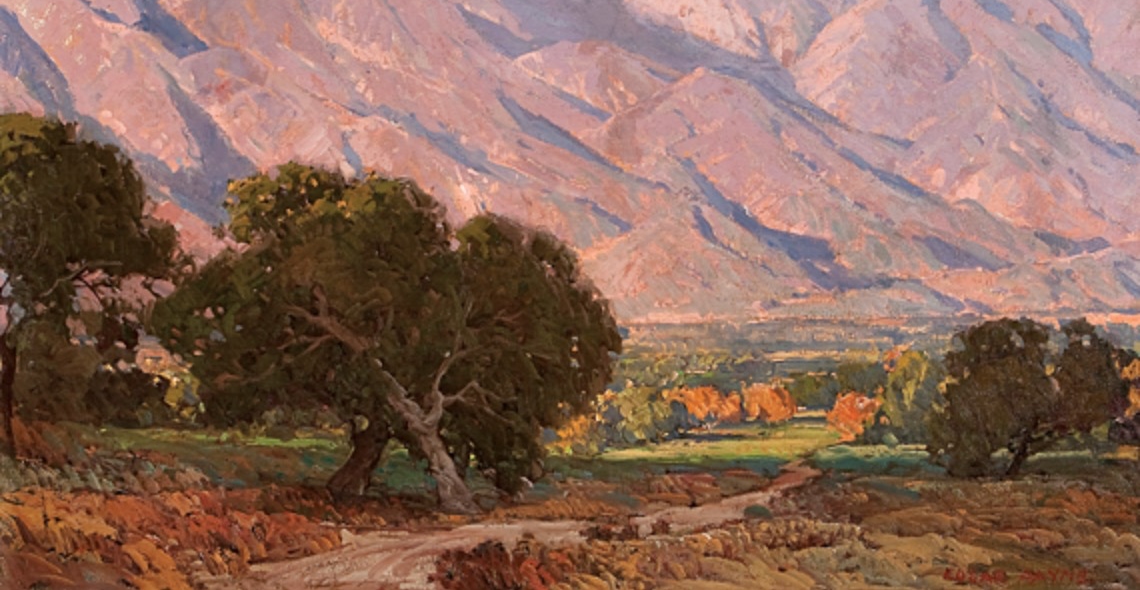
Public Museum Collections
+
Public museum collections with Payne’s works include:
- Utah Museum of Fine Arts at the University of Utah
- Chicago Art Museum
- The University of Nebraska Galleries
- Fleischer Museum (Scottsdale, Arizona)
- Indianapolis Museum of Art
- Laguna Art Museum, California
- National Academy of Design Collection
- National Collection of Fine Arts, Senate Building (Washington D.C.)
- Pasadena Art Institute
- Pasadena Museum of California Art
- Southwest Museum of Los Angeles
- Springville Museum of Art, Springville, Utah
- Crocker Art Museum, Sacramento, California
- Weisman Art Museum, University of Minnesota, Minneapolis, Minnesota
